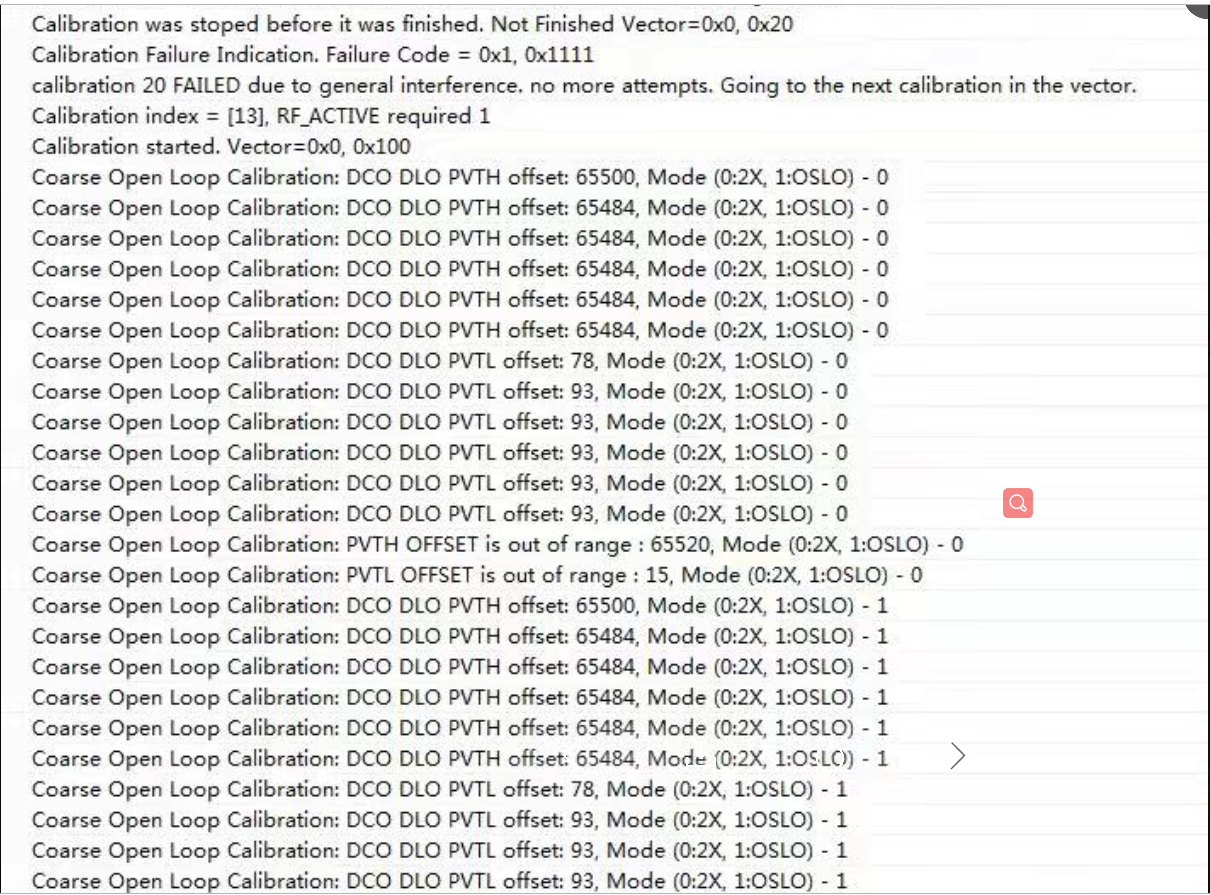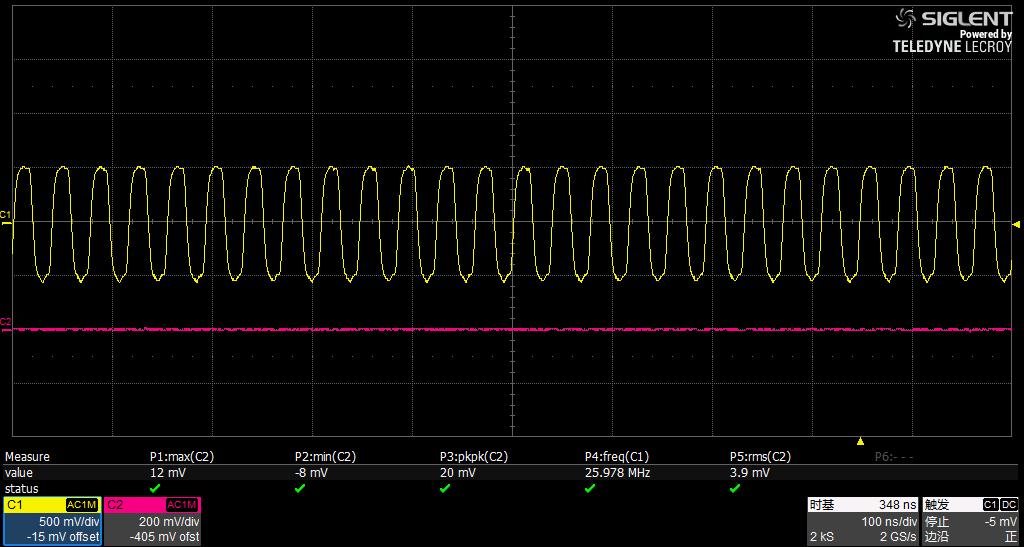Hi Team,
At present, my customer's combo module (using the WL1831GYFVT chip) has three cases of Bluetooth abnormality at the customer. Please help with the support of the TI product line team, thank you!
The fault description is as follows:
1. The module is used in the car. After the car has walked more than 6000 Km, Bluetooth appears in Advertising and can be found. Hcic_process_hci_commands: HCI_Write_Scan_Enable (Group 3 Opcode 0x1a);
Use different mobile phones (Apple, Huawei, Black Shark, etc.) to search for the BT address, but the mobile phone cannot search for the BT address;
2. Test the power-on sequence. The internal DC2DC output voltage of the module's main chip is normal, and the fast clock and slow clock waveforms are normal. The wifi search and connection ap are normal.
3. Finally, I saw the following log when grabbing the chip BT log:
1915 15: 18: 29.948 +0: 00: 05.149 Calibration started. Vector = 0x0, 0x20
1916 15: 18: 29.948 +0: 00: 05.149 DC_Calibration: Calibration Status (1-Pass; 0-Failed) = 0, Calibrated Regions (Bitwise 3 bits) = 0
1917 15: 18: 29.948 +0: 00: 05.149 Calibration was stoped before it was finished. Not Finished Vector = 0x0, 0x20
1918 15: 18: 29.948 +0: 00: 05.149 Calibration Failure Indication. Failure Code = 0x1, 0x1111
1919 15: 18: 29.948 +0: 00: 05.149 calibration 20 FAILED due to general interference. No more attempts. Going to the next calibration in the vector.
1922 15: 18: 29.948 +0: 00: 05.149 Coarse Open Loop Calibration: DCO DLO PVTH offset: 65500, Mode (0: 2X, 1: OSLO)-0
1923 15: 18: 29.948 +0: 00: 05.149 Coarse Open Loop Calibration: DCO DLO PVTH offset: 65484, Mode (0: 2X, 1: OSLO)-0
1924 15: 18: 29.948 +0: 00: 05.149 Coarse Open Loop Calibration: DCO DLO PVTH offset: 65484, Mode (0: 2X, 1: OSLO)-0
1925 15: 18: 29.948 +0: 00: 05.149 Coarse Open Loop Calibration: DCO DLO PVTH offset: 65484, Mode (0: 2X, 1: OSLO)-0
1926 15: 18: 29.948 +0: 00: 05.149 Coarse Open Loop Calibration: DCO DLO PVTH offset: 65484, Mode (0: 2X, 1: OSLO)-0
1927 15: 18: 29.948 +0: 00: 05.149 Coarse Open Loop Calibration: DCO DLO PVTH offset: 65484, Mode (0: 2X, 1: OSLO)-0
The preliminary judgment is that the Bluetooth broadcast caused by the calibration event and the mobile phone cannot search for the Bluetooth;
Please help analyze what is causing the problem? The end customer cannot reach the module during use,
Attached is the captured log file and the file in txt format; thank you!WL1831 Bluetooth address 2A9B main chip log calibration 1891-1920 line error offset value exceeds normal value 2019-12-05.txt





